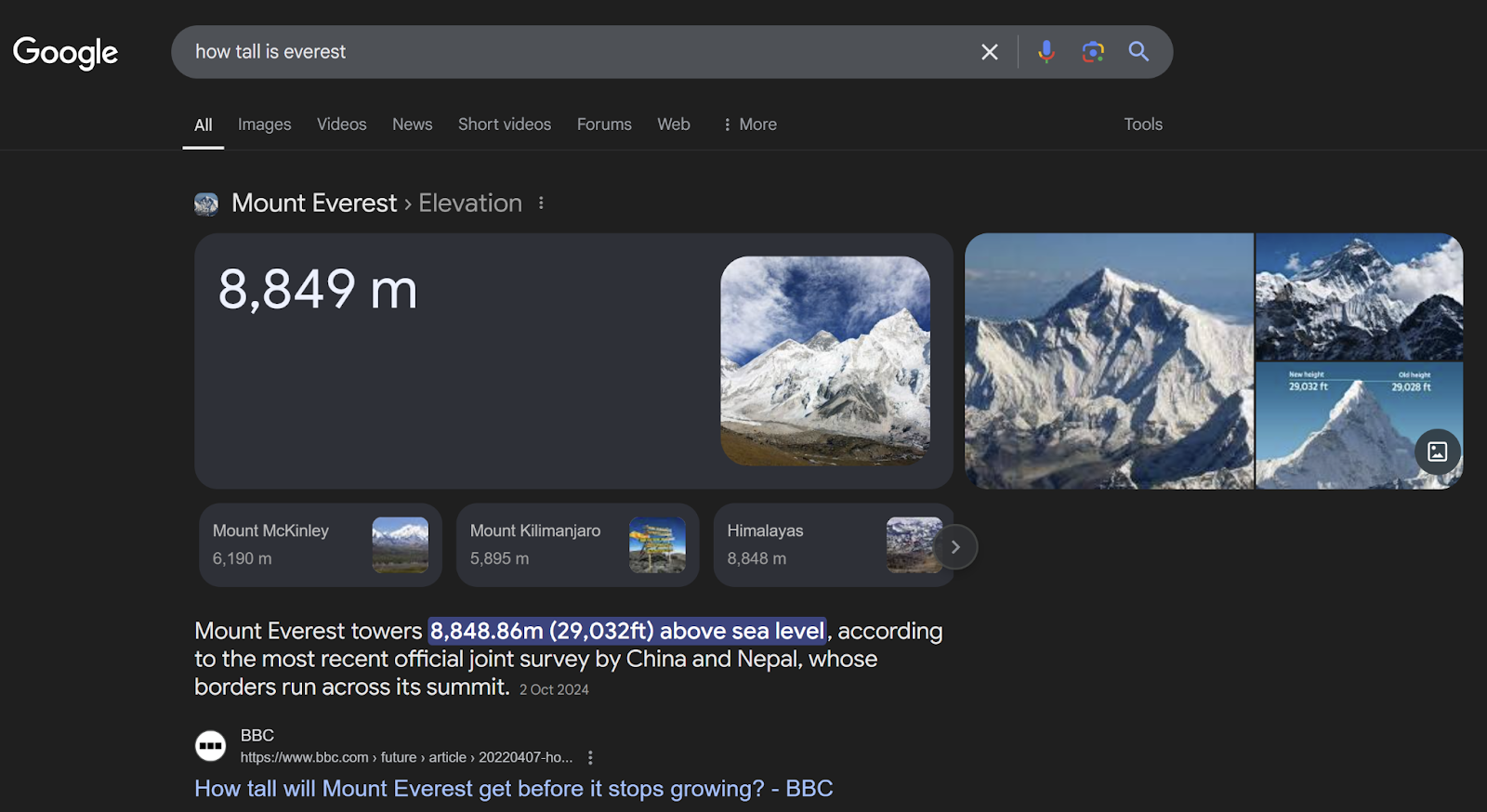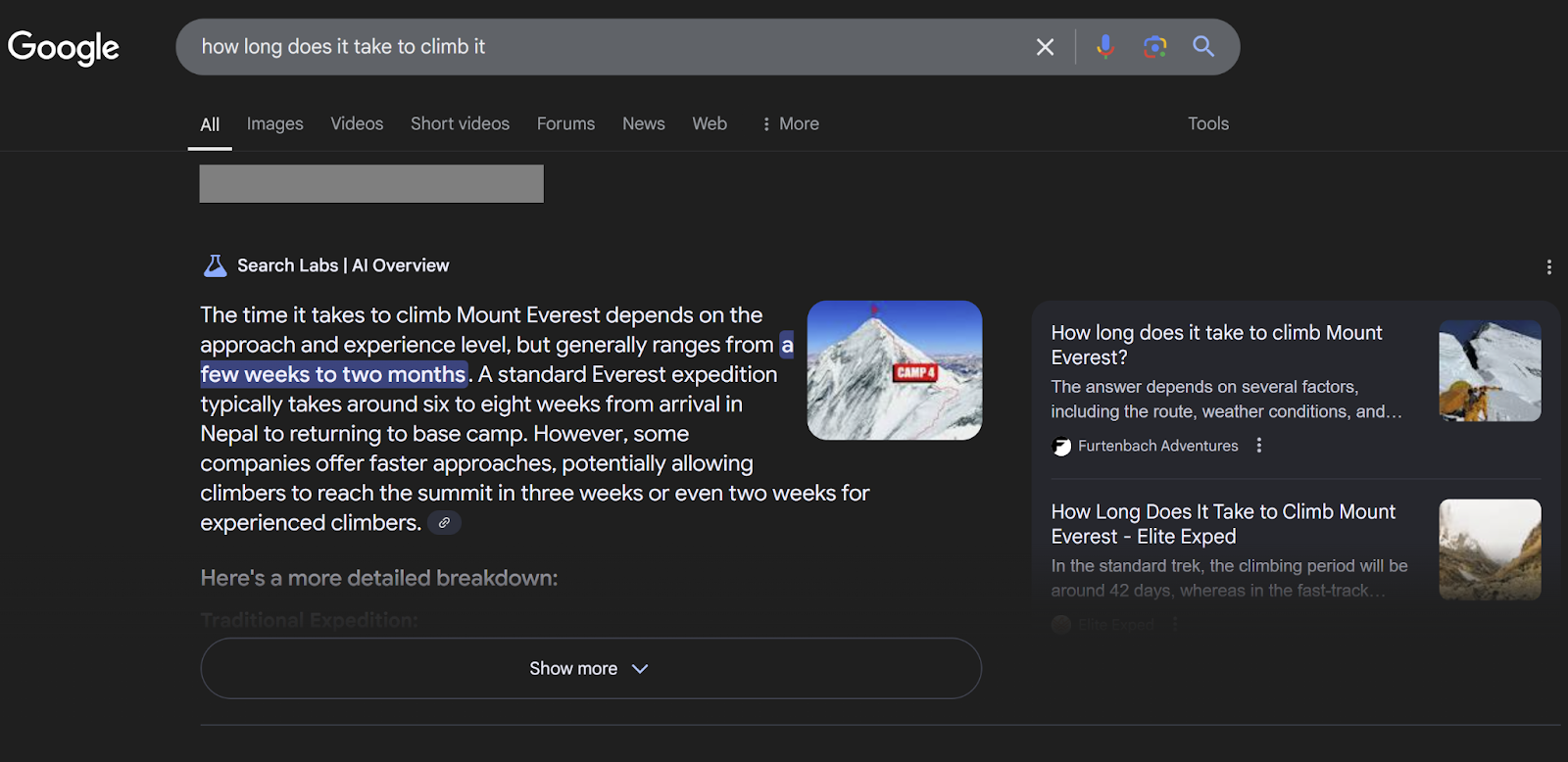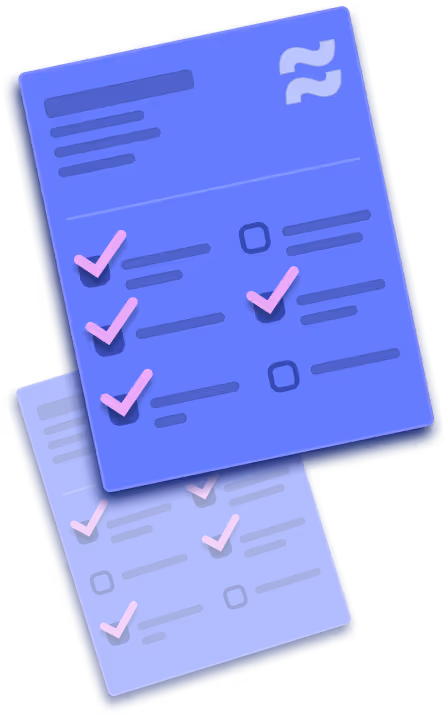
What’s Changing in SEO Because of AI—and What’s Staying Exactly the Same
Key takeaways
- AI is changing SEO as search engines focus on intent and context over keyword matching.
- Generative AI tools reduce website clicks by answering queries directly in search.
- Fast AI content creation makes quality, relevance, and persona targeting critical.
- AI can automate SEO tasks but still needs human oversight to avoid mistakes.
- Core SEO basics and multi-channel content remain essential for visibility.
SEO has undergone a billion changes since its inception.
Ah em! Maybe not a billion. However, the fact remains. Search engines roll out algorithms like freebies, consumers demand new ways for engagement, and now, AI is rewriting the rules.
Stuffing in keywords no longer makes a difference. Competing on a content scale is becoming obsolete. And intent is more centralized than ever. How we do SEO is changing—of course, not everything, but most.
Knowing how AI impacts modern SEO and what remains the same is thus essential for your SEO strategy.
In this article, we’ll break these impacts down and share what you can do to remain relevant.
What’s changing in SEO because of AI
AI has disrupted traditional SEO. Let’s see how it’s doing that.
1. GenAI now takes a bulk share of the internet share
According to a Statista report, approximately 13 million Americans used AI for search in 2023, and that figure is expected to reach 90 million in 2027. Research by Bain also shows that 60% of user searches are now complete without them needing to click on a website, thanks to AI overviews.
The likes of ChatGPT, Gemini, and Perplexity help internet browsers access the information they need more quickly. AI overviews also serve as a filter, taking most of the website traffic away by providing the answers people need before they click.

That means the search visibility competition just got… hotter.
2. AI mode in Google search is killing 99% of content
The traditional Google responds to user queries based on matching patterns. Let’s say you search for “Best food to eat”, the engine breaks it down into four words. Then it looks for articles containing:
- Best
- Food
- Eat
So, any website content containing matching words is pulled up, and it appears on the first page if its PageRank score is high. Provided other SEO factors are in place.
However, AI mode is changing that. Search engines like Google now focus on providing the most helpful response to users, which in turn clashes with your goal of generating traffic with massive content, according to Mike King.
Instead of matching keywords and patterns, Google AI mode prioritizes intent and context awareness. For instance, if you Google “best camera not expensive”, it understands you’re looking for an affordable camera and brings it up.
To make the best of intent in serving users, Google AI mode can also link their searches. So, imagine you searched for “how tall is Mount Everest”, you’ll get this.

Then, if you search for “how long does it take to climb” without specifying the mountain, Google will bring this:

You can see that Everest automatically became the search focus, even without being mentioned in the queries. Google AI mode will only reference your piece in the overviews and also rank you on its page if your content addresses the connective user intent rather than query terms.
The implication is that the majority of old-fashioned content, which focuses on pattern matching, will become obsolete.
3. Content production is faster
According to a 2024 Hubspot survey, 43% of marketers use AI to create content. That figure is likely to have seen an increase in recent months.
Looking beyond the negatives. AI in content production is not necessarily a bad thing, so long as you’re not letting it do the heavy lifting of your content. Additionally, this approach helps businesses save resources, which can be redirected to other SEO tasks.
On the other hand, that means you can no longer compete in the SEO industry solely based on the number of content pieces you produce. Most people will match your pace in that aspect, with AI, even if you have a whale budget compared to them.
So, start saying goodbye to quantity only, and hello to Relevance + Quality.
4. SEO operations are far more streamlined
AI-powered tools like Alli, Indexly, and Nostra are capable of auditing your site to detect issues such as missing canonical tags, duplicate meta descriptions, broken links, slow-loading pages, and unoptimized titles.
Some also provide targeted recommendations and can fix issues automatically with one click while also automating schema markup generation, internal linking, and page speed optimization.
But AI is not just improving the technical layer. It is also reshaping how your SEO teams run behind the scenes. Take an AI-powered contract management software as an example. They can help your team extract key terms from operational contracts, auto organize agreements, and make documents easily searchable.
The implication is that you don’t need a whole dev team or complex operational systems to stay efficient and technically sound. On the not-so-good side, AI makes errors, and there might be oversight you won't catch until rankings drop or pages break.
For instance, auto-generated fixes can misinterpret context, apply incorrect schema, or overwrite essential tags. One misfire, and you’re dealing with lost traffic or display issues.
What’s staying the same?
AI is upending the SEO playbook, but many things stay the same.
- Good website content will always be appreciated by both search engines and your target audience. Write for humans, optimize for search, and deliver value.
- Technical SEO with a human touch will always be paramount for visibility. Clean architecture, smart redirects, proper indexing, and hands-on QA are required to stay visible and competitive.
- Quality backlinks are not negotiable. Earned links from reputable sources continue to send strong signals to search engines.
- Page speed and loading time matter now more than ever. No one wants to wait. Google doesn’t either.
- Mobile friendliness should never be an afterthought.
You need to double down on each of them. While AI can give you leverage, your fundamentals must be sturdy.
How to remain at the top of your SEO game
AI in SEO is not all doom and gloom. You simply need to leverage it to your advantage and implement some measures to stay at the top of your game.
Here are some tips to use:
1. Prioritize use case + persona content
If you’re serving a broad market, you need to create content targeting each of your ideal personas. For instance, Nike, a leading athletic apparel and footwear brand, caters to athletes, gym enthusiasts, lifestyle consumers, and sneaker collectors.
So, its content will cover something like this:
- Best sports shoes for athletes
- Best sports shoes for gym bros
- Best sports shoes for gym ladies
- Best sports shoes for the elderly knees
- Best running shoes for wide feet
The list goes on and on. When someone searches for “best sports shoes for elderly knees” or “best running shoes for wide feet,” Google’s AI mode tries to understand who the searcher is and what problem they’re trying to solve.
Generic content, such as “Best Sport Shoes for Everyone,” gets buried, while highly targeted pages that address specific scenarios are more likely to surface, especially in featured snippets or AI-generated summaries.
2. Switch to super-long keyword queries (semantics)
With AI mode in search engines like Google, pattern matching, as we said, no longer works. “Best sports shoes” is as meaningless and without intent as “Best shoes”. Search engines require longer keywords, as they demonstrate more intent and help downstream LLMs, embedded to generate in-depth responses beyond surface-level.
Also, when a user searches for “Best shoes for runners”, Google’s AI mode creates semantic variations of that query. This could be in tens or hundreds. Each variation represents a new synthetic which Google is trying to match to the user’s exact intent based on tone, context awareness, and other algorithms in place.
If you create content addressing as many semantic variations of a keyword, ones that Google is likely to generate, you have more chances of ranking at the top. In this case, you can use tools like AlsoAsked.

AlsoAsked creates semantic variations
3. Optimize for Generative AI and leverage AI tools
Generative AI models like ChatGPT, Gemini, and Perplexity are the new search engines. If you’re optimizing for Google and Bing, then you have to optimize for them as well, since the majority of searches now go there.
You should reduce chunkiness and prioritize formatting. Search engines lift structured data like lists, tables, subheadings, and bullet points because they’re easier for AI to parse and summarize.
When content is broken into clear, scannable sections, it’s more likely to be featured in GPT results. In short, format like you’d like to be quoted.
At the same time, embrace GenAI to fast-track your content production. However, don’t let these tools do all the work. They can help you brainstorm ideas based on provided data, rewrite a section to sound better, give variations of your headlines, or even point out grammatical errors.
But using them to create the content out of thin air? That’s not going to cut.
AI tools now go beyond content generation. You can leverage AI-powered tools like SEMrush’s website checker to check website traffic, top-performing pages, and backlink sources for any competitor. This helps you uncover SEO gaps, spot content opportunities, and sharpen your keyword strategy with minimal manual input.
4. Go beyond texts and invest in other content formats
Google’s AI mode leverages a multitask unified model (MUM) that allows one resource to be translated into multiple others. This mode also enables Google to utilize various resources to generate a response in a single format.
For instance, old search engines crawl blog posts to find matching answers to a user’s query. But now, with MUM, Google not only crawls blog posts. It also leverages Google images, videos, podcasts, and the like.
Then, with its multimodal approach, the search engine generates a response to the user’s query, while possibly linking to the resources it used in the overview. Of course, these resources are also likely to rank higher, which implies that websites with more in-depth resources will have greater relevance.
So, invest in content beyond texts. Create videos, design illustrative graphics, and flow with translated podcasts. Provide as many sources for search engines to use. That will help you show up as much as possible.
5. Digital success is not only about SEO
SEO is changing so fast that you can’t bet only on it to scale your marketing success. Algorithms shift, AI evolves, and what ranks today might disappear tomorrow. If you want your brand to grow, build across channels like email, social, content partnerships, and yes, offline presence too.
Host workshops. Show up at industry events with your employees sporting a custom t-shirt featuring your brand. Sponsor a local gathering to build familiarity that search alone can’t. Offline recognition works in tandem with SEO and reinforces your brand in your target audience’s minds.
Wrapping up
SEO is changing. Well, it has always been in a state of change. But this time, it’s different. AI integration has transformed how search engines think. Generative AI tools are taking over search. Content and SEO tools powered by AI are filling up the Internet.
What should you do? Adopt!
Smartly adopt GenAI tools to enhance content creation. Utilize AI-powered SEO tools to streamline your process. Restructure your content to be as helpful as possible to your audience, usable by AI, and valuable to search engines. Keep the basics like good content and quality backlinks sturdy.
Most importantly, build offline recognition as well.
Frequently Asked Questions
How is AI-driven search changing traditional keyword-based SEO strategies?
AI-driven search focuses on user intent and contextual understanding instead of simple keyword matching. Search engines now interpret meaning, connect related queries, and generate overviews that answer questions directly, which diminishes the impact of keyword stuffing and shallow, pattern-based content in favor of deeply relevant, intent-led pages.
What can website owners do to stay visible when generative AI reduces organic clicks?
Website owners should prioritize highly targeted, persona-specific content, optimize formatting for AI summaries, and expand into multimedia formats like video and podcasts. Strengthening technical SEO, building quality backlinks, and diversifying traffic sources through email, social, and partnerships also mitigates dependence on traditional organic clicks.
How should keyword research evolve for AI-first search engines like Google’s AI mode?
Keyword research should emphasize long-tail, semantic queries that reflect clear intent, such as use-case and persona-focused phrases. Targeting multiple query variations, leveraging tools that surface related questions, and structuring content around those semantic clusters increases alignment with AI-generated interpretations of user needs.
What is the best way to use generative AI in content production without harming SEO?
Generative AI works best as an assistant for ideation, outlining, rewriting, and quality checks rather than as a full content author. Human experts should own research, structure, and final editing to ensure originality, accuracy, brand voice consistency, and genuine value that meets evolving search quality standards.
Which core SEO fundamentals remain critical despite AI-driven changes in search?
High-quality, human-centric content, strong technical SEO, fast page speed, mobile-friendly design, and authoritative backlinks remain foundational. Clean architecture, careful indexing, and hands-on QA are still required to maintain visibility, while AI-based enhancements should support—not replace—these established best practices.
How can brands optimize their content to be featured in AI overviews and GPT-style answers?
Brands should structure pages with clear headings, bullet lists, tables, and concise sections that directly answer specific questions. Cover related semantic variants, provide concrete examples, and maintain factual accuracy. Well-formatted, authoritative content is easier for AI systems to parse, summarize, and reference in overviews.
Why is a multi-channel strategy important when AI is transforming SEO?
A multi-channel strategy reduces reliance on volatile search algorithms and AI-generated answers. Building audiences through email, social media, events, partnerships, and offline branding creates resilient demand, strengthens brand recall, and supports SEO by driving direct visits, branded searches, and natural backlink growth over time.






.svg)


-min.png)










.png)
.png)
.png)








.svg)

.png)
.png)
.webp)
.svg)

